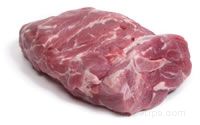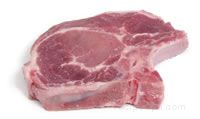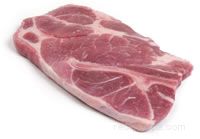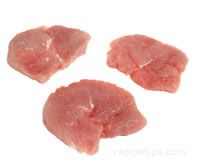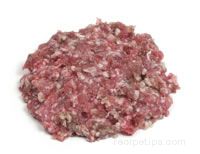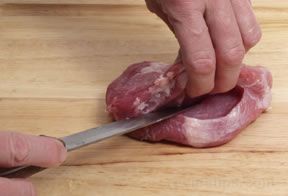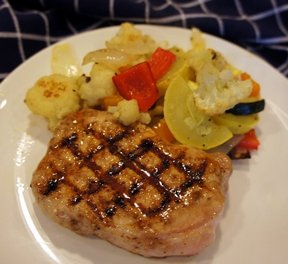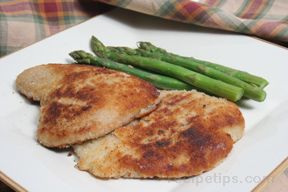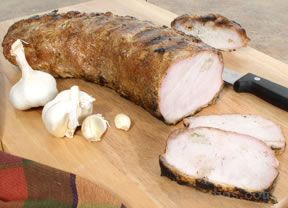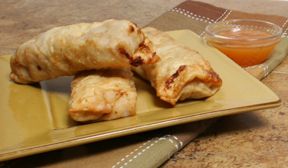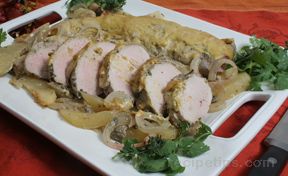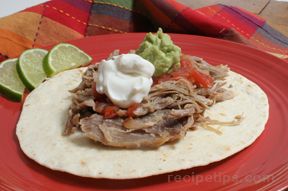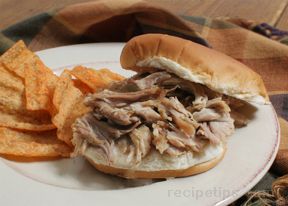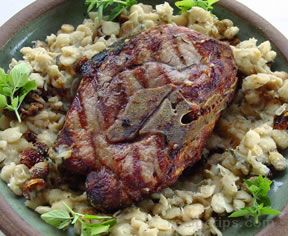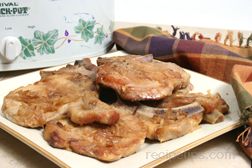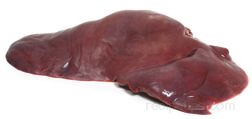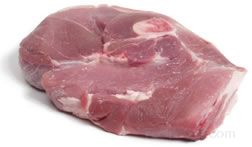|
Pork producers today have significantly changed production methods to produce much leaner meat than 25 years ago. Better breeding and feeding of the hogs and a grading system that stimulates the meat packers to trim more of the external fat than they did in the past has resulted in leaner meat. When the external visible fat on pork is removed before cooking, the result is a cut of meat that compares to chicken in calories, cholesterol and fat content.
Pork is a nutrient dense food, which means it has a high level of nutrients in proportion to its calorie content. It contains a high level of some of the essential B vitamins, such as B12, B6, thiamin, niacin and riboflavin. It is also rich in other nutrients, such as phosphorous, zinc, potassium, iron and magnesium, which are important to our daily diet. Our bodies require a certain amount of protein daily and the body does not store protein so we need to replenish it each day. A 3-ounce portion of pork provides approximately half of our daily requirement for protein.
Our bodies also require fat in our diet, which allows us to absorb vitamins that are fat-soluble and energy producing. But, too much fat is not healthy and will increase our cholesterol levels. Some cuts of pork are as low or lower in fat than chicken and over half of the fat is unsaturated fat, the type that helps lower cholesterol. Any cuts from the loin are good lean selections. Shown below are a few suggestions on how to reduce the fat content and avoid adding extra fat when preparing pork.
- Remove most of the external visible fat before cooking.
- Prepare pork with herbs and spices to enhance flavor rather than using sauces.
- To reduce the amount of fat used when frying, stir-frying, sautéing, or searing pork in a pan, use a nonstick skillet which requires less added fat, or use a nonstick skillet with a fat free nonstick cooking spray.
- After cooking ground pork, place in a strainer and rinse under hot water to remove excess fat.
- Cook pork using a low fat cooking method, such as roasting, grilling, broiling, steaming, poaching, braising, or stewing.
Nutrition Chart - Pork versus Other Meats
Based on a 3-ounce boneless serving - Cooked without
adding fat, salt or other ingredients.
| Type of Meat |
Calories |
Total
Fat |
Saturated
Fat |
Protein |
Cholesterol |
Cooking Method |
Sirloin Chop
(fat trimmed) |
164 |
5.7 g |
1.9 g |
25 g |
78 mg |
Broiled |
Center Cut Chop
(fat trimmed) |
173 |
6.6 g |
2.3 g |
26 g |
68 mg |
Broiled |
Rib Chop
(fat trimmed) |
186 |
8.3 g |
2.9 g |
24 g |
80 mg |
Broiled |
| Tenderloin |
139 |
4.1 g |
1.4 g |
26 g |
67 mg |
Roasted |
Center Loin
Roast |
160 |
6.4 g |
2.1 g |
25 g |
66 mg |
Roasted |
| Sirloin Roast |
168 |
7 g |
2.5 g |
25 g |
73 mg |
Roasted |
| Rib Roast |
182 |
8.6 g |
3 g |
24 g |
70 mg |
Roasted |
Blade Boston
Roast |
191 |
9.2 g |
3.3 g |
25 g |
75 mg |
Roasted |
Cured Ham-Lean
(5% fat) |
107 |
4.6 g |
1.5 g |
15 g |
45 mg |
Roasted |
Chicken Breast
(with skin) |
170 |
7 g |
2 g |
25 g |
70 mg |
Roasted |
Chicken Breast
(skinless) |
120 |
1.5 g |
.5 g |
24 g |
70 mg |
Roasted |
Chicken Thigh
(skinless) |
152 |
7 g |
2 g |
21 g |
81 mg |
Roasted |
Chicken Drumstick
(skinless) |
130 |
4 g |
1 g |
23 g |
70 mg |
Roasted |
Beef Tenderloin
(fat trimmed) |
180 |
8.5 g |
3.2 g |
24 g |
70 mg |
Broiled |
Beef Sirloin
(fat trimmed) |
170 |
6.1 g |
2.4 g |
26 g |
75 mg |
Broiled |
Lamb Chop
(fat trimmed) |
180 |
8 g |
3 g |
25 g |
80 mg |
Broiled | |








